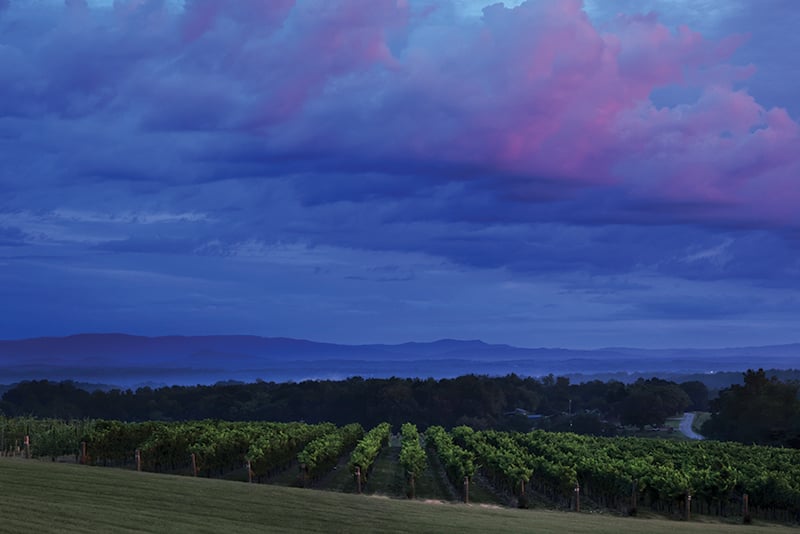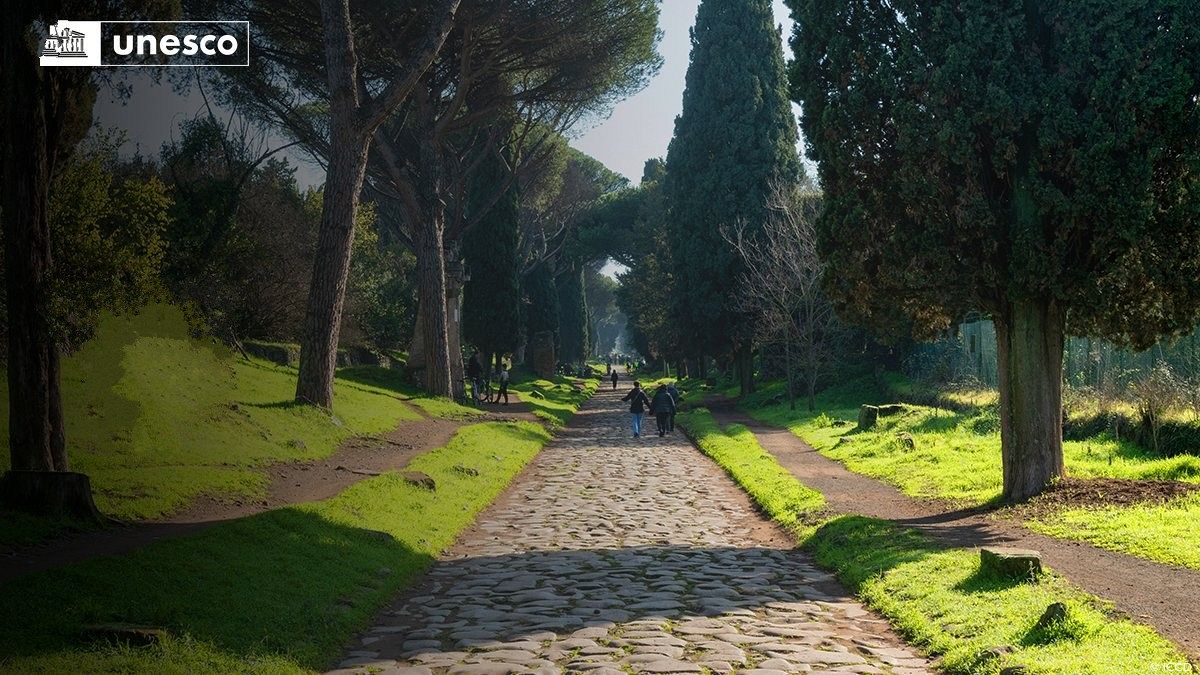North Carolina
Beyond the Muscadine: The Evolution of North Carolina Wine – Charlotte Magazine

On a drizzly August day, I leave Raffaldini Vineyards & Winery and wend my car through fields and rolling hills with cattle, ripe corn, Tyson poultry houses, and beehives. The back roads lack nearby Interstate 77’s many “Vineyard Tours” road signs, each with a list of winery names and exit numbers. But shortly after I turn onto Old U.S. Highway 421, my GPS and a small, unpretentious sign confirm I’ve arrived at Laurel Gray Vineyards—one of more than 200 wineries in North Carolina.
Most of those have popped up in the last two decades, a resurgence that harkens back to a century ago—but with a key difference. Before Prohibition, North Carolina produced more wine than any other state. But it was made exclusively from muscadine grapes—most from a native subspecies, scuppernong—which produce wine that’s intensely fragrant, fruity, and sweet. “People who love muscadine wine love it,” Laurel Gray owner Kim Myers tells me. “People who don’t care for that flavor just assume that all North Carolina wine is that flavor.”
Kim Myers and her husband, Benny, named Laurel Gray Vineyards by combining the middle names of their children. They planted their first grapes in Yadkin County, on land that’s been in Benny’s family since 1773.
But in recent years, the state’s winemakers have explored numerous grape and wine varieties, which have multiplied along with the vineyards and wineries. Muscadine wine still has a strong foothold, but vintners have proven that the state isn’t beholden to its indigenous fruit. Mark Hoffmann, a professor and small-fruits researcher at N.C. State University, estimates that muscadine accounts for about half of the wine made in North Carolina today. The rest, including Laurel Gray’s, is made from hybrid or single varieties of the common grape, Vitis vinifera, from all over Europe and beyond.
“North Carolina is one of the few places where you can drive to two or three wineries and get an entire portfolio all in one day,” Hoffmann says, “from the sweet muscadine wine, to a French-American hybrid, to a Bordeaux-style red wine.”
But winery owners like Myers say they still battle the state’s wine stigma. “I think when people hear that there are other wines besides muscadine in North Carolina, they kind of have the connotation of being homegrown—a made-in-a-garage kind of thing,” she says. “And people think, That’s not going to be good. But we’re making some really world-class wines here, of all kinds, that can stand up against wines from anywhere in the world.”

Raffaldini Vineyards & Winery’s tasting room is designed to look like a Tuscan villa.
It took a while for North Carolina’s wine industry to rebound after Prohibition, when people typically got buzzed on cheap, quick-to-produce moonshine. It would be almost two decades before 10 Onslow County farmers planted 25 acres of scuppernongs and established the state’s first post-Prohibition winery in 1950. A few others followed suit, including Jack Kroustalis, the founder of Westbend Vineyards in Lewisville, the first to plant Vitis vinifera vines. By 2000, North Carolina had 21 wineries.
By then, the once-booming tobacco industry was shrinking, which helped make room for wine’s return. Demand for tobacco waned until 2005, when federal quota and price support programs ended. Farmers had to find other ways to pull money from their soil.
In 2002, a group of pioneering winemakers in the Yadkin Valley petitioned the U.S. Treasury’s Alcohol and Tobacco Tax and Trade Bureau to designate the region—which includes all of Wilkes, Surry, and Yadkin counties as well as parts of four others—as the state’s first American Viticultural Area. The Treasury recognizes 269 AVAs as areas with terrains and climates conducive to grape growing; more than half are in California.
Today, North Carolina has more than 200 wineries, 400 vineyards, and six AVAs. (A petition for a seventh, around Tryon in Polk County, was pending as of September.) All the AVAs, and most of the wineries and vineyards, are in the Piedmont and mountains. Yadkin Valley, approved as an AVA in 2003 and just a 90-minute drive from Charlotte, remains the largest.
“The western part of North Carolina is a little bit cooler and has less humidity than the eastern part,” Hoffmann says. “The further you get into northern and western North Carolina, the better the conditions get.” Grapes thrive in lean, loose soil and require far less organic matter and nutrients than other crops. To counteract North Carolina’s wet climate, winemakers use a process called “appassimento”—Italian for “withering”—to dehydrate grapes before fermentation. The resulting wine tastes like it could be from Napa or Tuscany.

Employee Thomas Ponce (above) navigates grape racks, which Winemaker Chris Nelson (below) loads. Each rack holds roughly a half-ton of grapes that the team dries in a process called appassimento (“withering”).

Most of North Carolina’s growing roster of wineries fall into one of two camps: those whose families have farmed here for decades; and outside investors who come here to avoid the competition and land prices of places like Napa Valley.
In the mid-1990s, after about a decade working on Wall Street, Jay Raffaldini decided to create an alternative source of financial security for his family that didn’t depend on the stock market. “I’m from an Italian family and began drinking wine at the dinner table when I was 7,” he tells me over the phone from one of his three homes. “So if you have money and you love wine, there’s one of two things you can do: have a fancy wine cellar or start a business.”
He wanted to keep working in New York, too, so he ruled out the West Coast. In 2000, he hired a Napa Valley consultant to help him select from 62 North Carolina properties. They settled on a 102-acre plot in Ronda, about 70 miles north of Charlotte. Raffaldini Vineyards & Winery harvested its first grapes in 2003 and opened to the public in 2005. Today, you drive around the final curve of the road that leads to Raffaldini to behold hills striped with grapevine rows and an enormous Tuscan-style villa perched atop the highest hill.
Laurel Gray is only a 10-minute drive from Raffaldini, in Hamptonville. The terrain is the same, the grapes similar. But instead of a colossal villa with wrought-iron gates, Laurel Gray has a classic red barn and a modest house-turned-tasting room with a white picket fence. Myers and her husband, Benny, opened Laurel Gray in 2001 on land they say has been in their family for 10 generations. In 1773, King George III and Queen Charlotte of England gave their former gardener and Benny’s ancestor, Joseph Myers, 400 acres of land in Yadkin County to thank him for his dedication to the throne.

Raffaldini Vineyard Manager Jason Krug and his team harvest sagrantino grapes.
More than two centuries later, as Benny was retiring from the tobacco industry, he and Kim wanted to ensure the family land was of value to future generations, including their two children. Before they planted their first grapes in 2001, they hired a Napa Valley consultant and enrolled in Surry Community College’s then-brand-new viticulture and enology program.
“That first year,” Kim recalls with a chuckle, “we walked along and laid our textbook down on the ground under the vines so we could look at the pictures and try to make our vines match.”
Their vines took off, and the business has grown steadily since. Today, they produce seven French wine varietals, plus blends, under the Laurel Gray label and operate The Yadkin Valley Wine Co., which processes grapes for other vineyards and labels.
“I can already feel the public awareness and perception of North Carolina wine starting to change,” says Brianna Burns, hired by the state’s Department of Agriculture and Consumer Services last year to market North Carolina wines. She’s worked with state wines—including as an educator and in a wine shop—for almost a decade, and she says quality has surged. “I used to buy North Carolina wine for the shop, and back then, there were about three that I’d recommend,” Burns says. “Now, I could recommend at least 75.”
Kim says she’s encouraged by the open minds and palates of younger imbibers. “They’re very experimental. They’re drinking crazy, wild beers and vodka with all kinds of flavors. That’s really great for the industry, because they’re willing to say, ‘Let’s go try these new places. Let’s see what they have to offer.’”
Later, she poses the question she asks all who scoff at N.C. wine: “If you go to a restaurant, and you don’t care for its food, does that stop you from ever going to another restaurant?”
TESS ALLEN is the associate editor.

North Carolina
Tropical Storm Debby: ‘Historic,’ ‘catastrophic’ flooding possible on South Carolina coast

Tropical Storm Debby closing in on Florida, hurricane warnings issued
Strong winds and rain batter coastal Florida as Tropical Storm Debby intensifies
Tropical Storm Debby, in the Gulf of Mexico Sunday afternoon and headed toward the Big Bend area of Florida, is forecast to impact parts of South Carolina and North Carolina this week. Alerts have been issued for the storm that could bring potentially historic rainfall, rough surf and flooding to these regions.
At 2 p.m. Sunday, the National Hurricane Center issued an advisory for Tropical Storm Debby, noting that it is expected to strengthen into a hurricane before making landfall Monday morning. Debby is expected to move slowly across northern Florida and into southern Georgia before moving into the Atlantic Ocean and up the coast.
The cone that shows the storm’s probable path includes much of S.C. However, many variables remain, including the strength of the still-developing storm and its exact eventual path.
Track Tropical Storm Debby
Track Debby: South Carolina Storm Tracker and Model Mixer
What can we expect in South Carolina?
The Hurricane Center’s forecast shows the center of the storm reaching South Carolina by about 8 p.m. Tuesday. But effects like heavy rain could start as early as Monday night.
Rainfall along the coast is expected to be the main concern. The S.C. coast from the southern part of the state past the Charleston area could see 16-20 inches of rain, with local amounts of up to 30 inches. That will likely result in “considerable” flash and urban flooding, and some river flooding is possible, the Hurricane Center said.
“Heavy rainfall will likely result in considerable flooding impacts from the Florida Big Bend region through southeast Georgia and the Coastal Plain of the Carolinas through Friday,” the Hurricane Center said. “Potentially historic heavy rainfall across southeast Georgia and South Carolina through Friday morning may result in areas of catastrophic flooding. Significant river flooding is also expected.”
The likelihood of storm surges creates a life-threatening situation, the Hurricane Center said. Persons located within these areas should take all necessary actions to protect life and property from rising water and the potential for other dangerous conditions. Promptly follow evacuation and other instructions from local officials.
Rain of about 1-4 inches is forecast for parts of the Upstate.
What watches and warnings are in effect in South Carolina?
A flood watch is in effect from 2 a.m. Monday through Friday morning for southeast South Carolina, including Allendale, Beaufort, Charleston, Coastal Colleton, Coastal Jasper, Dorchester, Hampton, Inland Berkeley, Inland Colleton, Inland Jasper and Tidal Berkeley.
A tropical storm watch is in effect for Charleston, McClellanville and Edisto Island. The forecast calls for winds of 20-30 mph with gusts to 40 mph.
A storm surge watch is in effect beginning Monday afternoon for Charleston, McClellanville and Edisto Island, with a potential of 2-4 feet above ground.
What other watches and warnings are in effect?
As of Sunday afternoon the depression was about 125 miles west-southwest of Tampa, Florida.
- A hurricane warning is in effect for Florida coast from the Suwannee River to the Ochlockonee River.
- A hurricane watch is in effect for the Florida coast west of the Ochlockonee River to Indian Pass * Florida coast south of the Suwannee River to Yankeetown.
- A tropical storm warning is in effect for the Dry Tortugas, the Florida coast south of the Suwannee River to East Cape Sable and the Florida coast west of the Ochlockonee River to Indian Pass.
- A tropical storm watch is in effect for the Florida coast west of Indian Pass to Mexico Beach, and the Georgia and South Carolina coast from the Mouth of the St. Mary’s River to South Santee River South Carolina.
- A storm surge warning is in effect for the Florida coast from the middle of Longboat Key northward to Indian Pass including Tampa Bay.
- A storm surge watch is in effect for the Florida coast from Bonita Beach northward to the middle of Longboat Key, including Charlotte Harbor, and thr Georgia and South Carolina coast from the Mouth of the St. Mary’s River to South Santee River South Carolina.
More: When is first day of fall? SC’s weather forecast by Old Farmer’s Almanac; is it accurate?
More: Heat wave continues, cooling stations open in Spartanburg County. What about Greenville?
Where is Tropical Storm Debby?
Track it: South Carolina Storm Tracker and Model Mixer
Conditions at 2 p.m. Aug. 4:
- Location: 125 miles west-southwest of Tampa, Florida.
- Maximum sustained winds: 65 mph.
- Movement: North-northwest at 13 mph.
More: Heat advisory in effect for Greenville, Spartanburg and Anderson, precautions to stay cool
Are you prepared for a hurricane?
Hurricane season runs from June 1 to Nov. 30. Even if this system won’t pose a threat to the Upstate, it’s never too early to be prepared.
Iris Seaton, Carolinas Connect, and Cheryl McCloud, USA TODAY NETWORK – Florida, contributed.
Todd Runkle is the Carolinas Connect editor and also a content coach for the Asheville Citizen Times, part of the USA TODAY Network. Reach him at trunkle@gannett.com.
North Carolina
North Carolina Zoo celebrates its 50 anniversary

ASHEBORO, N.C. (WTVD) — The North Carolina Zoo is celebrating 50 years.
Located in Asheboro, the zoo houses about 1,700 animals and over 250 species primarily from Africa and North America.
On social media, NC Zoo wrote Friday:
“Throughout our history, we’ve been home to a diverse array of remarkable animals, dedicated keepers, and passionate employees who work tirelessly behind the scenes. Join us in honoring this milestone by visiting the Zoo in 2024!”
The Zoo also mentioned the Zoo’s first animals, which were two Galapagos tortoises named Tort and Retort.
The post said in part: “These two tortoises symbolize the early days of the North Carolina Zoo and are cherished deeply in our hearts.”
The North Carolina Zoo is one of two state-supported zoos in the country. The other is the Minnesota Zoo.
Copyright © 2024 WTVD-TV. All Rights Reserved.
North Carolina
NC has some of the most dangerous roads in the US: See how Wilmington-area counties rank
With a recent study revealing North Carolina as one of the states with the riskiest roads to travel, some may wonder how safe the roads are here in the Cape Fear region.
MarketWatch Guides, a site that provides “reviews of consumer products and services to help readers make educated purchasing decisions,” focuses in part on car insurance comparisons, vehicle safety and more.
A recent study by the site analyzed factors including annual miles driven per 100,000 system miles, percentage of rough roads and fatal injuries per 100,000 licensed drivers. States were given a rating out of 10 points, with 10 being the most dangerous.
More: Distracted driving in Wilmington: How big of a problem is it?
North Carolina’s ranking among the most dangerous
According to the study, the states with the most dangerous drivers based on the factors studied are:
- Louisiana – 7.55/10
- California – 7.21/10
- New Mexico – 6.74/10
- Hawaii – 6.73/10
- Delaware – 6.67/10
- New Jersey – 6.53/10
- Mississippi – 6.47/10
- North Carolina – 6.39/10
- Massachusetts – 6.33/10
- Maryland and Texas – 6.26/10
According to the study, North Carolina had 32.5 fatal injuries per 100,000 licensed drivers, but only 2.1% of rough roads, which was the lowest percentage out of the other ranked states.
For a more localized perspective, the North Carolina Department of Transportation releases annual traffic crash facts data. The most recent 2022 report includes a ranking of counties based on several factors, including reported crashes, crash severity, crash rates based on population, registered vehicles and estimated vehicle miles traveled.
The most dangerous county for drivers, ranked at No. 1 for the past five years, was Robeson County. The county had 60 fatal crashes in 2022 with 1,136 non-fatal injury crashes. The rest of the total 4,056 crashes were property-damage-only. The county with the best ranking was Hyde County, coming in at No. 100. The county had one fatal crash in 2022 and 10 non-fatal injury crashes. The county had a total of 45 crashes, the rest of which were property damage only.
More: MyReporter: Which intersections see the most red-light camera violations in Wilmington?
Here’s where the Cape Fear region counties ranked.
Brunswick County
Ranked No. 76 in 2022, Brunswick County had 25 fatal crashes and 715 non-fatal injury crashes. The total crashes for that year were 3,146. The remainder of the crashes were property damage only.
New Hanover County
Ranked No. 58, New Hanover had 19 fatal crashes and 1,313 non-fatal injury crashes, both of which went down from 2021. The total crashes in New Hanover were 5,617. The remainder of the crashes were property damage only.
Pender County
Ranked No. 47, Pender County had the worst ranking despite having the lowest number of crashes. The county had 12 fatal crashes and 374 non-fatal injury crashes, and a total of 1,156 crashes. The rest of the crashes were property damage only.
Iris Seaton, USA Today Network, contributed to this report.
-

 Mississippi5 days ago
Mississippi5 days agoMSU, Mississippi Academy of Sciences host summer symposium, USDA’s Tucker honored with Presidential Award
-

 Politics1 week ago
Politics1 week agoRepublicans say Schumer must act on voter proof of citizenship bill if Democrat 'really cares about democracy'
-

 Politics1 week ago
Politics1 week agoTrump announces to crowd he 'just took off the last bandage' at faith event after assassination attempt
-
World7 days ago
More right wing with fewer women – a new Parliament compendium
-

 World1 week ago
World1 week agoIsrael says Hezbollah crossed ‘red line’, strikes deep inside Lebanon
-

 Politics1 week ago
Politics1 week agoHarris failed to combat ‘root causes’ of illegal immigration, former Border Patrol union chief says
-

 News1 week ago
News1 week agoVideo: Kamala Harris May Bring Out Trump’s Harshest Instincts
-

 World1 week ago
World1 week agoItaly's Via Appia enters the Unesco World Heritage List















